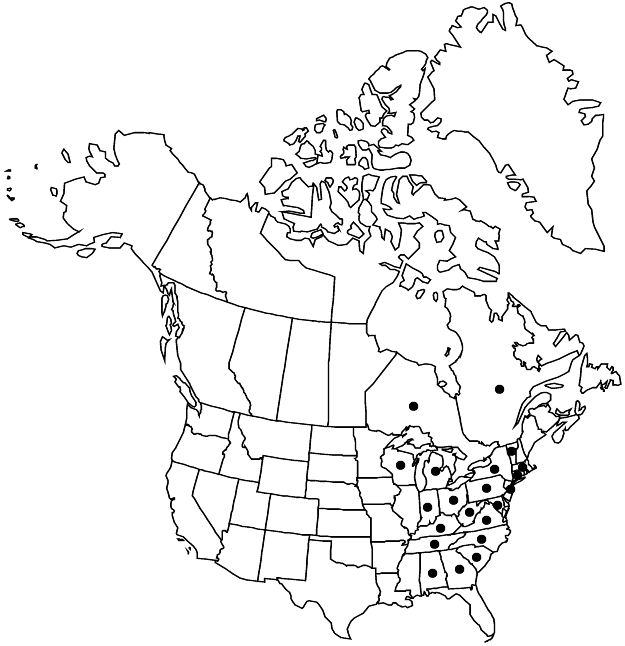Viola rostrata
Fl. Amer. Sept. 1: 174. 1813.
Plants perennial, caulescent, not stoloniferous, 5–20 cm. Stems 1–7, ascending to erect (often declining during anthesis), glabrous, on caudex from fleshy rhizome. Leaves basal and cauline; basal: 1–5; stipules lanceolate, margins laciniate, apex acute; petiole 1–9.6 cm, glabrous; blade sometimes purple-spotted abaxially and/or adaxially, reniform to ovate, 1–4.5 × 1–4 cm, base broadly cordate to cordate, margins crenate to serrate, mostly eciliate, apex obtuse to acute, surfaces usually pubescent, mostly adaxially toward base, sometimes glabrous; cauline similar to basal except: petiole 0.4–4 cm; distal cauline blades ovate to deltate, 1–4.5 × 1–4 cm, base cordate, apex acuminate to acute. Peduncles 5–9 cm, usually glabrous. Flowers: sepals lanceolate, margins eciliate, auricles 1–2 mm; petals pale lavender-violet on both surfaces, all white basally, lower 3 purple-black-veined, all beardless, lowest 8–20 mm, spur white, purple, or lavender-tinged, elongated, 10–20 mm; style head beardless; cleistogamous flowers axillary. Capsules ellipsoid, 4–6 mm, glabrous. Seeds beige to bronze, 1.3–2 mm. 2n = 20.
Phenology: Flowering Apr–May.
Habitat: Rich, mesic to dry, well-drained woodlands, mountains
Elevation: 200–1800 m
Distribution

Ont., Que., Ala., Conn., Ga., Ind., Ky., Md., Mass., Mich., N.J., N.Y., N.C., Ohio, Pa., S.C., Tenn., Vt., Va., W.Va., Wis., e Asia (Japan)
Discussion
Viola rostrata has the longest spur of any North American Viola species.
Viola rostrata reportedly hybridizes with V. labradorica (= V. ×malteana House) and V. striata (= V. ×brauniae Grover ex Cooperrider).
Selected References
None.
Lower Taxa
"thick" is not a number. "narrow" is not a number.
